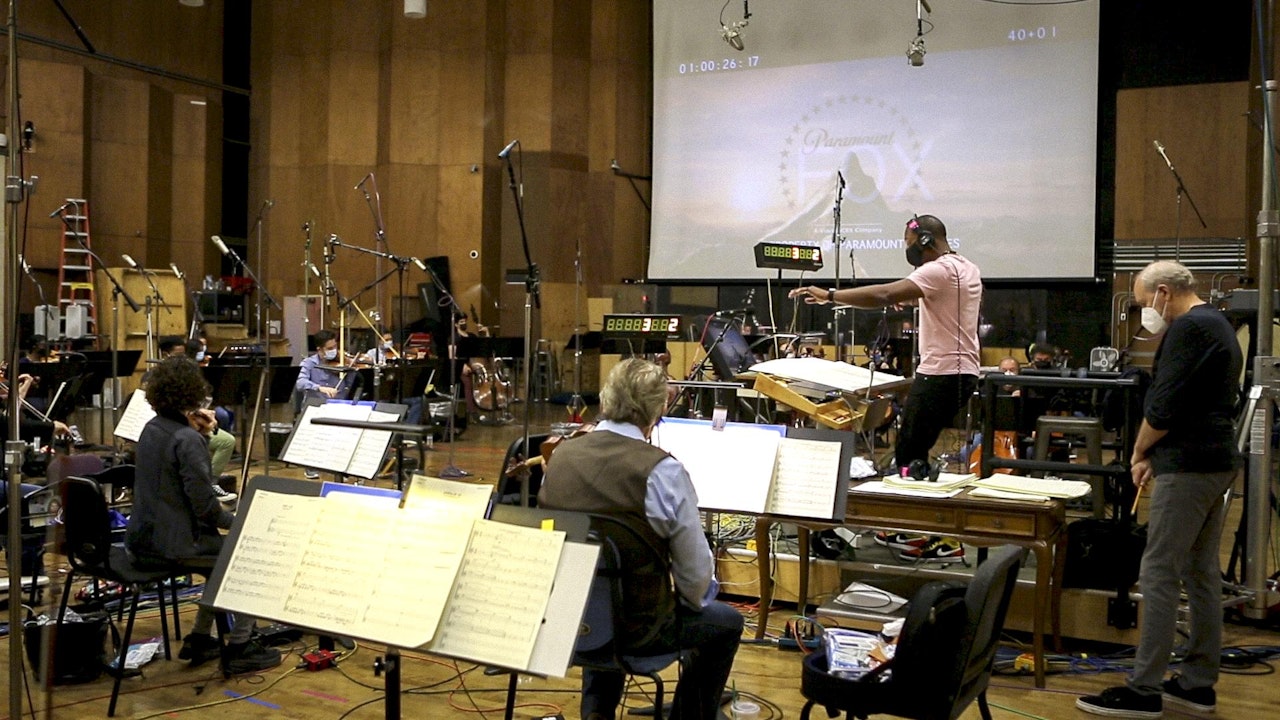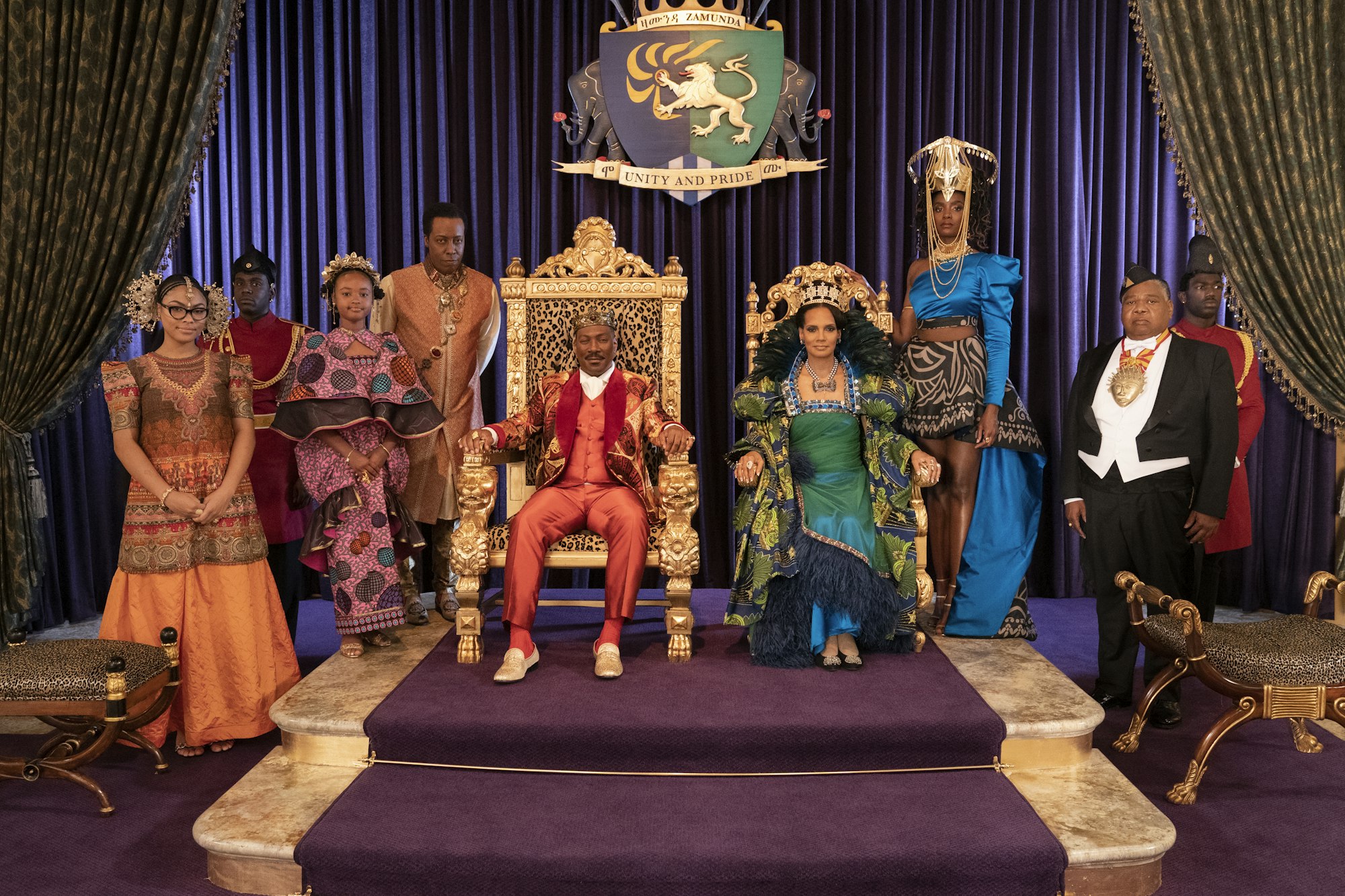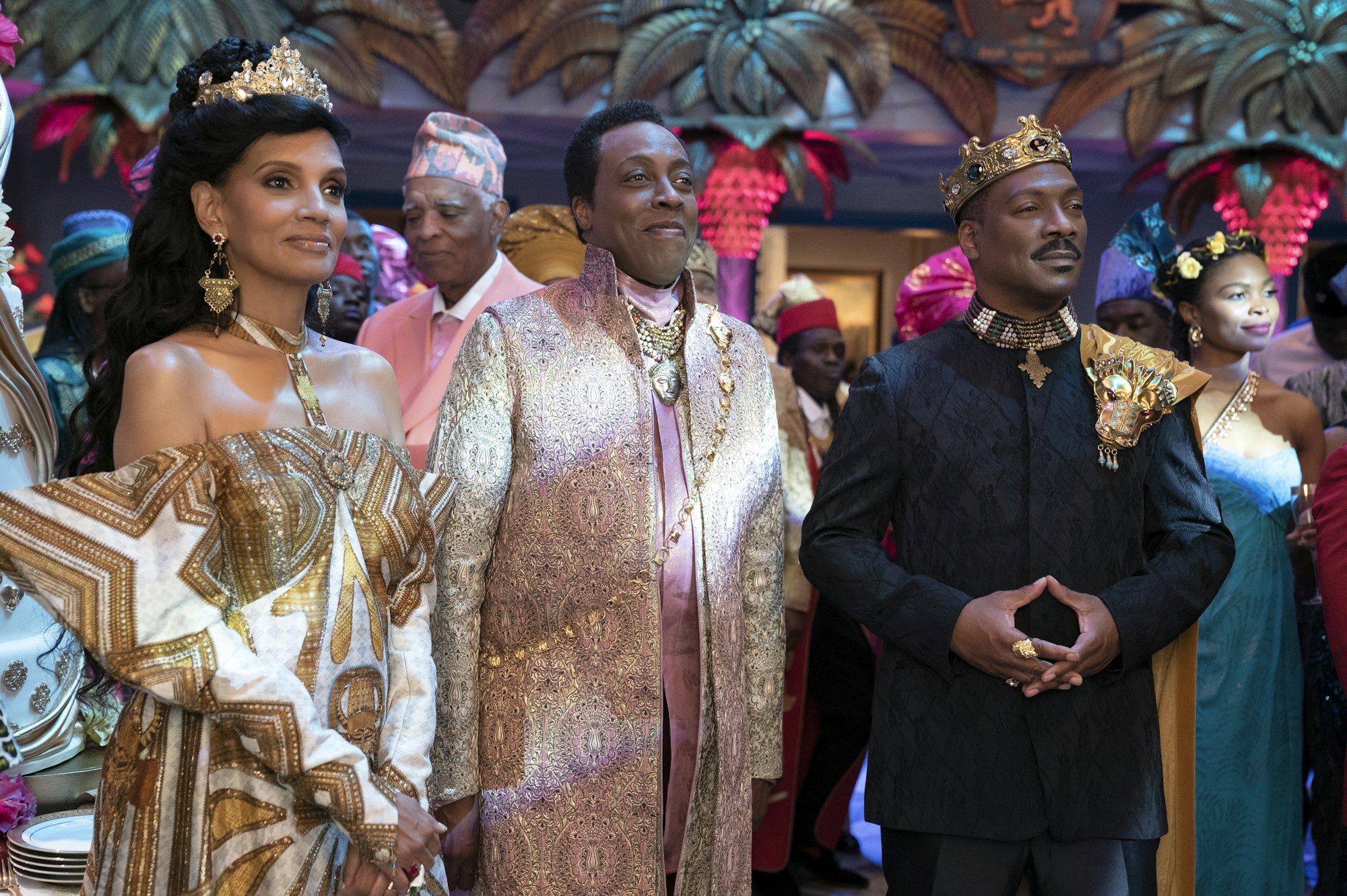With a collection of mini-series, additional music credits, and indie films under his belt, L.A-based Jermaine Stegall's latest compositional venture steered him towards Coming 2 America which has released worldwide on Amazon Prime. The comedy sequel to the 1988 firm favourite, Coming to America. The original movie saw Eddie Murphy, a Prince, and Arsenio Hall, his manservant embarking on a journey to Queens New York, to find a wife.
After we shared our fatigue surrounding the global pandemic, Jermaine talked through how he used the time wisely last year whilst composing the score for Coming 2 America. He was met with the hurdles of juggling musicians in different places, recording during Covid at FOX Studios & also dealing with the film release being delayed. Jermaine said that this whole experience kept him grounded even when the outside world was somewhat chaotic. He still got to spend time on set and compose in realtime whilst they were filming, however...
How did you come to work on the score for Coming 2 America?
I was getting reacquainted with the music department at Paramount, just kind of catching up on the things that I’ve been doing over the years really. I had become a huge fan of flying myself back and forth to Skywalker Ranch to record these indie scores and different things. For a couple of the scores - actually one including ‘Canvas’ - I would go up there and do the strings, or just brass, only and I was just casually talking with the team there about these projects that I was doing. They mentioned Coming 2 America and I was like ‘that’s a big deal’. Two weeks later, I’m sitting in a room with the director playing him with the ideas that I had. They needed some music to shoot these on-camera music moments too. Since everything was working, they were like, “we should just move forward and hire this guy”. It was perfect!

I asked the director honestly later, ‘how did that conversation come about?’ He said that he told them [Paramount] that he ‘wanted someone new, someone fresh, someone hungry. And in terms of diversity, it wouldn’t hurt if we can highly consider someone who’s Black.’ The next thing you know, I’m at the airport at 3:00 to Atlanta and dealing with the on-set musicians, trying to solve problems and make all these things come together. So that really was how I came to be involved.
When we got through shooting the movie, there was the question of what is the sound of Zamunda? Now we have to score this thing. We have to come up with something authentic. So yeah, we went and made it happen.
When you were in the room with the directors, what was in the mockups that you showed them?
The very first one, they told me a few plot points in the script. My first mockup really was the Main Title. I actually did three or four different versions of that and the one that stuck was kind of the one that you hear in the film - it ended up being a tweaked version of one of my first passes. But it was one of the very first things that I mocked up. I thought, ‘let’s do something similar to the spirit that Nile Rodgers had in that opening sequence where he used the chant over those trees (in the original film) but let’s do that on steroids! Let’s have an orchestra. Let’s have a harp. Let’s have percussion. Let’s have chanting. Let’s have a choir. Let’s have everything. Have it be a celebration of the legacy of Coming to America’. That really was the idea behind it.
I thought, let’s do something similar to the spirit that Nile Rodgers had in that opening sequence. But let’s do that on steroids!
Do you feel like being able to be on set influenced & enhanced your approach to the score?
Oh, it changed the game. Even Randy Spendlove, who’s the head of music at Paramount said so. He flew down when we had one sequence that was shot over the course of three or four days, which is a dance sequence that was originally going to be about two minutes long. He said having me on set and watching me work with the choreographer of the movie - adding bars, taking away bars, adding accents to the Pro Tools session - being able to make those changes so that they could shoot it a certain way, with 200 people standing around, was essential.
We were able to make the musical changes that they were able to feel whilst they were dancing. When the playback happened, it all made sense and when the edit happened they knew what tempo it was. It was so valuable.

The score sounds so rich and vibrant, even when listening to it in isolation. How did you go about taking elements from the first film whilst making the score your own?
It was something to kind of use as a distraction honestly, during the pandemic and during a lot of the Black Lives Matter protests that were happening in the world. It was a certain point in which literally, L.A. was on fire outside our door - because of the Los Angeles fires that were happening. There were riots. So the idea of feeling like there was something to be grounded in or something to focus on, almost made me feel guilty - you feel like you want to be doing something about making the world a better place.
The good thing is that this movie, because of Covid, had the release date pushed back. A lot of the political stuff that we’ve had to deal with was out of the way so we can actually just sit back and literally have a weekend where people are just watching this movie and smiling.
What's your studio setup and what's your setup like when you're writing mockups?
Digital Performer is my DAW. I’m from the D.P. camp, which I feel like there are very few people left. But it’s well learned and I love it. Honestly, I was switching to Cubase at a certain point and I ended up just going back. I have Cubase, I don’t use it regularly, but I also use Ableton Live in the background on almost every cue in a subtle way. I try not to rely on it.
Really Digital Performer is the template, the orchestral template. Somewhere in the 400 track range of articulations is the main part of the template. I have a PC that runs Vienna Ensemble Pro and it hosts all the samples. I used to have like four or five different Macs. But now it’s all one PC finally.
In terms of mockups, a lot of the vocals I used are choir samples, but then I re-sang the words because in some cases I wanted to use Yoruba, which is a West African language native to where Zamunda would be, and also Swahili. So some of those things I needed to be very specific on what the vocalists were hearing in terms of the style, so they knew exactly how I wanted it to sound.
Digital Performer is my DAW. I’m from the D.P. camp, which I feel like there are very few people left.
I used a lot of live musicians. Originally I wanted to have four percussionists at FOX for like six hours. You just go crazy, but that was a little overkill. But there’s a love interest in the movie where Lavelle’s character is starting to court the character, Mirembe, who’s this royal barber. I mean, her name, Mirembe, sounds like a marimba. There’s a scene where they’re in the rose garden for almost four minutes and they’re talking and they’re getting to know each other and their cultures. I had glass marimba, bass marimba, African marimba, our standard marimba, xylophone, cellist, vibraphone & harp! I just wanted to do this like an African blanket. But then Orchestral Swarm from Spitfire was the one that really just brought the whole thing together and gave me some organic ear candy to just kind of tie all that in.
We also had live percussion, I mean, there had to be live percussion on this movie. Sidney Hopson is our featured percussionist on this and he recorded this one thing that he posted on his Instagram where he’s snapping his fingers really fast. I saw him do that and I was like, ‘okay, I’m writing a cue just so he can do that - that’s amazing’. I’ve never heard anyone do that - it’s virtuosic finger snapping. It’s in there.

When you come to the mix stage, are you part of that process? Is it really collaborative? Or do you just deliver your music and step back?
It really was collaborative. I mean, Dennis Sands was our recording engineer and he was excited to mix as well. I was excited, I’m a huge fan and have been for years. Jason LaRocca actually recorded the choir sessions that we had. But when it came to Dennis, I was able to be socially distant in his studio. I think he was scheduled to mix for 10 days, but I think it was something like 15 or 16 days in total. Sometimes I’d drive there and other times we’d do some listening through Source Connect here at my studio.
For the cues that I needed to hear mixed in 7.1, I went to his studio to do the references. But the ones that weren’t as big of a deal in terms of the mix I pretty much listened to here. He was happy to do anything I asked. You want to be able to sit with someone and really learn from an engineer during the process.
When you did listen to it in surround and you knew things were all in its place, how did it feel to just hear it all, in its full richness?
It’s scary because you wish you could just hear it like that permanently. But you know that everyone can’t hear that way, so you need to hear how most people are going to hear it.
It’s amazing when you’re listening to your cues in different spaces. Some musicians might do the car test where they’ll play their music in the car and see what it’s like and then compare it to a studio.
Yeah. I do that too. I always do that. I’m doing that now even. You prepare to release the score album, I’m listening to it in the car a lot.
Can you explain in a bit more detail how you composed the choir and voice elements of the film?
I will say that there’s an artist in his own right from Africa named Adekunle Gold. One of the choir sessions that we recorded with the group, En Vogue, one of their old managers pointed me to this guy and said ‘if there’s anything you need involving African anything he could be your consultant’. We shared a couple of phone conversations and I told him there were some texts that I wanted to use so that anyone who might be native to these parts of West Africa would recognise them. Across the whole film, Adekunle translated lots of pieces for me. We used Swahili in one scene. It wasn’t heard in the film the same way, but we had a translation of the text, Amazing Grace, that created a very specific sound for a scene that was very heartfelt.
Do you have any pearls of wisdom that you’ll take from this whole project that you might apply to any future projects?
I mean, and I had to do this because, for me, this project was kind of one of those dream projects you get when you see icons on the screen where you grew up with them and you feel like you know them. You feel like it would be so fun to get to work on a thing like this. Well, there are certain scenes where I had to turn the screen off, because it was so intimidating to look at Eddie Murphy, Arsenio, and James Earl Jones in the same frame. You can’t really squeeze a lot more icons in this movie than that.
Every now and then turn the screen off. Actually think and consider the composition that you’re doing, because it’s not just about sitting and improvising to picture. You’re actually writing music. You’re actually writing melodies. You’re actually coming up with harmonies and chord changes that will hopefully tell the story on purpose and not an accident.
